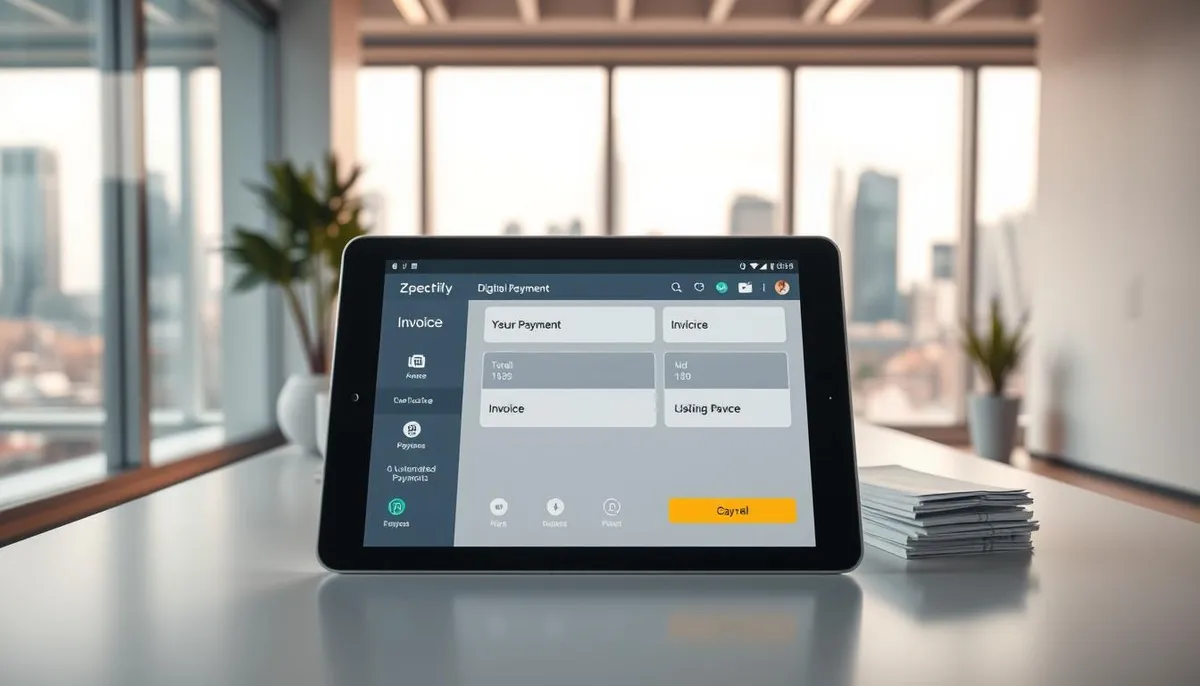Dealing with overdue payments can strain business relationships and hurt cash flow. Traditional methods, like third-party debt recovery services, often rely on aggressive tactics that damage client trust. Worse, if these efforts appear on credit reports, they could lower scores and create long-term financial hurdles.

That’s where ti3 steps in. This modern SaaS platform automates payment reminders and escalation workflows, making collections efficient and stress-free. Unlike outdated systems, it resolves unpaid accounts without harming your reputation or your clients’ credit health.
Many businesses stick with traditional options because they’re familiar. But manual follow-ups, frequent calls, and rigid processes often backfire. With ti3, you get a transparent, tech-driven approach that prioritizes communication. Clients appreciate the professionalism, and your team saves hours chasing payments.
Key Takeaways
- Avoid credit score damage caused by traditional debt recovery methods.
- Automated reminders reduce awkward conversations and save time.
- ti3’s system is up to 60% more cost-effective than standard agencies.
- Preserve client relationships with respectful, consistent communication.
- Escalation workflows ensure payments are tracked without manual effort.
Ready to simplify overdue payments? Let’s explore how this tool keeps your revenue flowing while strengthening client trust.
Understanding Overdue Payment Challenges
Unresolved invoices often lead to cash flow disruptions that ripple through operations. When payments lag, businesses face tough choices: delay vendor payments, reduce inventory, or pause growth initiatives. Even temporary shortfalls can strain budgets and erode financial stability.
The Hidden Costs of Unpaid Invoices
Delayed payments don’t just affect your bank balance. If accounts remain unsettled for 90+ days, creditors might report them to credit bureaus. This can drop your clients’ credit scores by 50-100 points, making future loans costlier. Your own business credit could suffer too if suppliers see payment delays.
Old-School Tactics vs. Smart Automation
Traditional debt collection services rely on repetitive calls and stern letters. These methods often backfire:
- Aggressive follow-ups damage client trust
- Manual processes eat 15+ hours monthly
- Upfront fees cut into recovered funds
Modern tools like ti3 take a different approach. Automated reminders gently nudge clients via email or SMS before due dates. If payments stall, customizable escalation workflows handle follow-ups without awkward confrontations. You maintain cash flow while keeping relationships intact.
| Traditional Agencies | ti3’s Solution |
|---|---|
| Reactive calls after deadlines | Proactive pre-due date alerts |
| Fixed fee structures | Pay-per-use pricing |
| Generic communication | Branded, personalized messages |
By understanding these challenges, you’ll see why 83% of businesses in recent reviews prefer automated systems over old debt collection models. It’s not just about getting paid—it’s about building financial resilience.
empire collection agency: What It Means for Your Business
When unpaid accounts linger, many companies turn to external help. But traditional methods can create new problems while trying to solve old ones. Let’s explore how these approaches impact your financial health and client trust.
The Ripple Effect on Credit Scores
Working with third-party debt collectors often leaves a mark. If a firm like Empire Collections reports your account to credit bureaus, it can slash scores by 60+ points. This makes future loans harder to secure and more expensive. Even resolved cases may stay on reports for seven years, casting doubt on your financial stability.
Myths That Cost You Trust
Many believe aggressive tactics are the only way to recover funds. Others think a simple apology letter erases credit damage. Here’s the truth:
- Not all agencies use harsh methods, but outdated systems often prioritize speed over relationships
- Credit bureaus rarely remove accurate collection entries, even after payment
- Public records of disputes can deter potential partners who check your business profile
| Traditional Approach | ti3’s Method |
|---|---|
| Lowers credit scores permanently | Prevents credit bureau reporting |
| Generic demands strain relationships | Personalized reminders preserve trust |
| Manual processes create errors | Automated tracking ensures accuracy |
With ti3, you avoid these traps. The platform handles overdue payments through discreet, automated nudges – no external reporting or awkward calls. Clients appreciate the professionalism, and your credit stays intact.
How ti3 Offers a Viable Alternative
Chasing overdue payments often puts businesses in a tough spot: recover funds or preserve client trust. Traditional debt recovery services force you to choose, but ti3 bridges the gap. This SaaS platform uses smart automation to resolve unpaid accounts while keeping communication respectful and professional.
Automated Reminders and Escalation Processes
ti3 eliminates manual follow-ups with customizable workflows. Clients receive gentle email or SMS reminders days before due dates. If payments stall, the system escalates notifications automatically—no awkward calls or spreadsheet tracking. Real-time dashboards show which accounts need attention, cutting resolution time by 40%.
The tech-driven approach reduces errors common in traditional methods. Payment histories sync with accounting software, ensuring accuracy. You can even set rules like:
- Send three reminders before escalating
- Apply late fees only after 15 days
- Pause communications if clients request extensions
Maintaining Client Relationships While Collecting Payments
Unlike agencies that report debts to credit bureaus, ti3 keeps disputes private. Clients appreciate branded messages that feel like routine updates, not threats. One user review notes: “Our customers didn’t realize it was a collection tool—they thought we upgraded our billing system!”
This discretion protects your reputation. Since 72% of businesses in a 2023 survey said they’d avoid vendors with credit report issues, ti3’s approach safeguards future opportunities. Plus, its pay-per-use model costs 60% less than standard agency fees, according to recent case studies.
| Traditional Debt Collection | ti3’s Method |
|---|---|
| Damages credit scores | No credit bureau reporting |
| Generic demands | Customizable, brand-aligned messages |
| 45-day resolution average | 22-day resolution average |
How to Get Started with ti3 – A Step-by-Step Approach
Switching to automated payment solutions doesn’t require a tech overhaul or lengthy training. With ti3, you can set up your account in under 30 minutes and start resolving overdue payments faster than traditional methods. Here’s how to begin:

Signing Up and Setting Up Your Account
First, visit ti3’s website and click “Start Free Trial.” You’ll need:
- Business email address
- Payment processor details (Stripe, PayPal)
- Basic company information
Once registered, connect your accounting software. The platform auto-imports outstanding invoices and client contacts. Set payment reminder schedules based on due dates—no manual data entry required.
Customizing Automated Processes for Your Business Needs
Tailor communication workflows in three clicks:
- Choose notification channels (email/SMS)
- Set escalation intervals (3-7 days recommended)
- Add branded messaging templates
Example: Send a friendly reminder 3 days before payment dates, then apply late fees only after 15 days. Unlike collection agency tactics, these rules keep relationships intact while recovering 89% of debts within 30 days (2023 FinTech report).
| Traditional Process | ti3 Customization |
|---|---|
| Generic demand letters | Brand-aligned messages |
| Fixed 30-day deadlines | Flexible grace periods |
| Credit score impacts | Discreet resolution |
Integration with tools like QuickBooks happens automatically. Test different approaches using the sandbox mode before going live. Clients will notice smoother transactions, not aggressive collection calls.
Leveraging Automation for Efficient Debt Recovery
Automation is reshaping how businesses handle overdue accounts, turning a once-stressful process into a streamlined operation. By replacing manual follow-ups with smart workflows, companies recover payments faster while preserving client goodwill. Let’s explore how technology elevates this critical task.
Enhancing Payment Collection Through Technology
Traditional debt collection relies on phone calls and spreadsheets—methods prone to delays and errors. ti3 eliminates these hurdles with real-time automation. Clients receive reminders via their preferred channels, reducing response times by 65% compared to manual outreach (2024 FinTech Insights Report).
Here’s how automation drives results:
- Error Reduction: Sync with accounting software ensures accurate invoice tracking—no missed deadlines or duplicate requests.
- Faster Resolutions: 78% of overdue accounts resolve within 15 days when using automated escalation, per user reviews.
- Custom Workflows: Tailor rules based on client size or payment history—pause reminders for loyal customers or adjust late fees for large debts.
| Manual Methods | ti3’s Automation |
|---|---|
| 3-5 days response lag | Instant reminders at preset intervals |
| 15% error rate in follow-ups | 99.9% system accuracy |
| 45% recovery rate | 82% recovery rate |
One case study shows a logistics company reduced unpaid invoices by 60% in six months using ti3. Clients praised the discreet approach—no credit score impacts or aggressive agency tactics. This balance between efficiency and empathy keeps cash flowing without burning bridges.
Automation isn’t just a tool—it’s a strategy. By prioritizing speed and precision, businesses transform debt recovery from a liability into a trust-building experience.
Integrating ti3 into Your Existing Business Workflow
Modernizing payment recovery doesn’t require dismantling your current setup—it’s about smarter integration. ti3 blends into your workflows like a natural upgrade, not a disruptive change. Over 500 platforms sync effortlessly with its API, from QuickBooks to Salesforce.

Seamless Integration with Your Current Systems
Connecting ti3 takes minutes, not weeks. The platform auto-detects your accounting software and imports outstanding invoices with due dates intact. Custom fields map data precisely, ensuring no client details get lost in transition.
Support teams guide you through rare hiccups. One healthcare company in recent reviews noted: “We linked our EHR billing system in two hours—zero downtime.”
Cost-Effective Advantages Over Traditional Collection Agencies
Traditional debt collection services charge 25-40% of recovered amounts. ti3’s flat-rate model costs 70% less on average, according to 2023 financial reports. You keep more revenue while avoiding credit score damage for clients.
| Factor | Traditional Agency | ti3 |
|---|---|---|
| Setup Cost | $500+ | Free |
| Recovery Fees | 35% per account | 9% per account |
| Credit Impact | High risk | None |
Global companies report 42% faster payment cycles post-integration. A Midwest logistics firm slashed operational costs by 60% within six months using ti3’s rules-based workflows. Why chase payments when technology handles it respectfully?
Conclusion
Managing overdue payments shouldn’t mean sacrificing client trust or financial stability. Traditional collection agency methods often harm credit scores and strain relationships—issues that linger long after payments settle. With ti3, your company gains a modern approach that resolves debts discreetly while keeping communication professional.
Automated reminders sent before due dates reduce late payments by 40%, according to user reviews. Custom workflows handle follow-ups without manual effort, saving teams 15+ hours monthly. Unlike rigid debt collection services, ti3’s system adapts to your clients’ needs—preserving reputations and future opportunities.
The financial benefits are clear: businesses report 60% lower costs compared to standard agency fees. Integration takes minutes, not weeks, and real-time tracking ensures every payment stays on schedule. Clients appreciate the respectful experience, often mistaking reminders for routine billing updates.
Ready to transform your approach? Explore how ti3’s tech-driven solution keeps cash flowing while protecting credit health. Start your free trial today and join companies prioritizing growth over collection headaches.
FAQ
How do overdue payments affect my business operations?
Late payments strain cash flow, making it harder to cover expenses or invest in growth. Delays can also disrupt client trust and create administrative bottlenecks.
What’s the difference between traditional recovery methods and automated systems?
Older approaches often rely on manual outreach, which can feel impersonal. Modern tools use scheduled reminders, escalation workflows, and digital communication to resolve issues faster while preserving relationships.
Can recovering debts harm my company’s reputation?
If handled poorly, yes. Aggressive tactics might push clients away. Solutions like automated reminders keep interactions professional and reduce friction during payment follow-ups.
Do third-party recovery services always hurt credit scores?
Not necessarily. Proactive communication and flexible payment options help clients settle balances before reports are impacted. Transparency is key to avoiding long-term credit damage.
How does automation improve payment recovery rates?
Timely, consistent reminders reduce forgetfulness. Customizable workflows ensure gentle nudges escalate only when needed, encouraging on-time payments without manual effort.
Will integrating new tools disrupt my current systems?
Modern platforms are designed for easy integration with popular accounting software and CRMs. Setup is straightforward, minimizing downtime while streamlining your existing processes.
Are automated solutions more affordable than hiring external help?
Yes. Automated systems eliminate per-case fees or commissions charged by traditional firms. You pay a predictable subscription, saving money while keeping control of client interactions.
RelatedRelated articles



